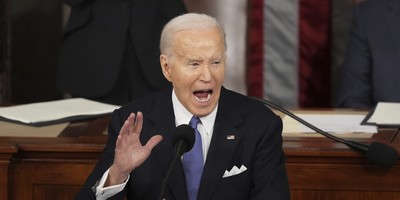The European Central Bank’s (ECB) recent move to adopt what is described as “negative interest rates” to guard against deflation should lift stock prices, spur businesses to invest and help to aid lagging economic growth on the continent.
With the U.S. Federal Reserve scaling back on its easy-money policies as the American economy recovers, the ECB seems focused on adopting some of the same methods that helped the United States. However, such policies are artificial ways to fuel the economy and encourage businesses to take on additional debt that may need to be paid off at much higher interest rates in the years ahead.
Mario Draghi, president of the ECB, orchestrated the adoption of a new set of easy-money policies, including one that will charge member banks a small amount, 0.1 percent, to keep their excess funds at Europe’s central bank. Other steps the ECB is taking to spur economic activity in Europe include cutting its benchmark interest rate to just 0.15 percent, offering banks modestly priced four-year loans with a requirement that the money be used for business lending and buying packages of loans to encourage lending to companies in struggling countries.
London-based investment adviser Nicholas Vardy described the ECB’s measures as a “trifecta of simultaneous stimulus measures.”
Without question, Europe’s economy has been weak, particularly in places such as Portugal, Italy, Greece and Spain (the so-called PIGS). Whether the new policies will adequately stimulate the economy is open to debate but they should start to trim the value of the euro and make goods produced there less expensive for foreigners to import.
Recommended
Central banks from Japan to the United States have used monetary policies during the past few years to weaken their currencies to spur exports and now the ECB is pursuing the same path. However, the strategy only works if other central banks avoid following suit. If all central banks adopt the same policies, the short-term effectiveness of the moves would counter each other.
The easy-money policies also carry long-term risks. Artificially low interest rates discourage people from saving money. Those savings are essential to spur economic growth in a sustainable way, since savings allow for capital accumulation and investments.
Another risk of negative interest rates is that governments can be induced into excess spending without maintaining proper fiscal discipline. Low interest rates encourage risk-taking activities that contribute to asset bubbles. When inflation returns, the asset bubbles can burst and cause economic upheaval.
Indeed, free-market economist Mark Skousen, PhD, warned that low interest rates adopted by the European Central Bank and the U.S. Federal Reserve may produce an artificial boom and lead to the dreaded consequence of asset bubbles.
For the short term, negative interest rates in Europe could help Americans and Europeans alike by encouraging spending and lending in Europe. Producers of goods in Europe should benefit, along with consumers of the goods and investors in those European companies. But watch out if inflation returns and causes asset bubbles, as well as the need to refinance debt at increased costs as interest rates rise.
Paul Dykewicz is the editorial director of Eagle Financial Publications and a columnist for Townhall and Townhall Finance.
























Join the conversation as a VIP Member